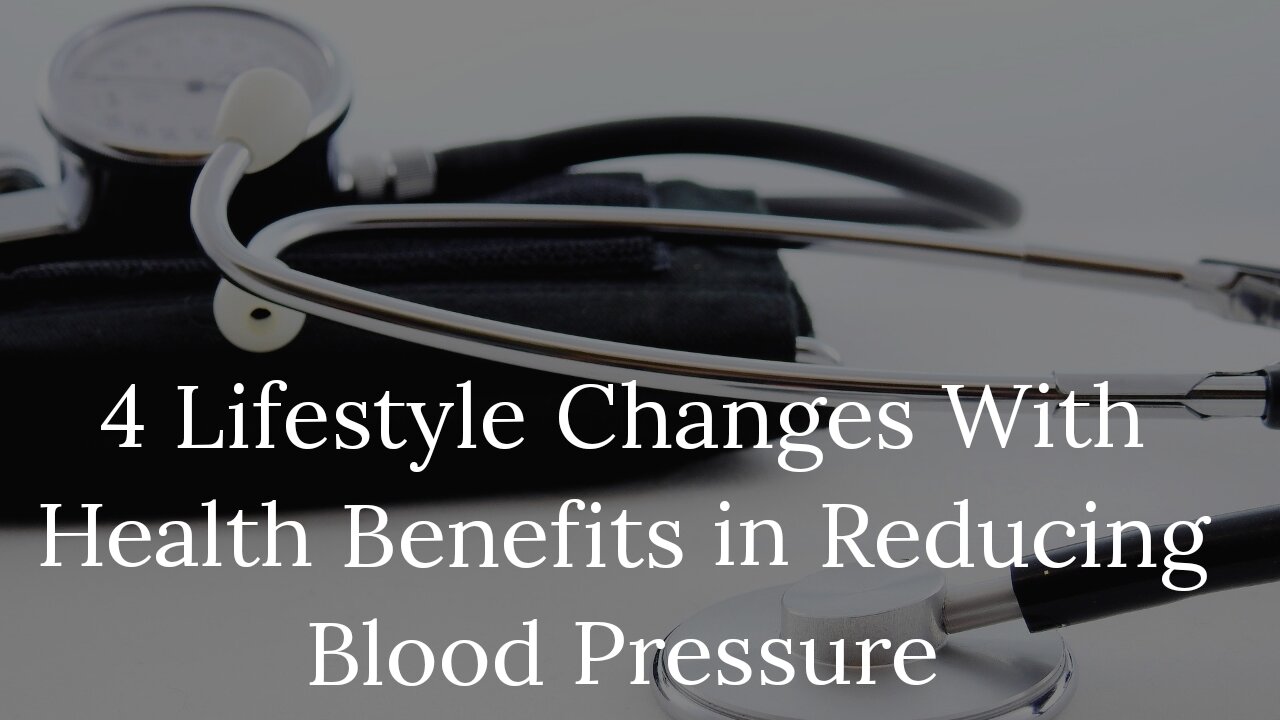Premium Only Content

4 Lifestyle Changes With Health Benefits in Reducing Blood Pressure.
Here are 4 lifestyle changes that can reduce blood pressure and keep it down.
1. Lose extra pounds and watch your waistline.
Blood pressure often increases as weight increases. Being overweight also can cause disrupted breathing while you sleep (sleep apnea), which further raises blood pressure.
Weight loss is one of the most effective lifestyle changes for controlling blood pressure. If you’re overweight or have obesity, losing even a small amount of weight can help reduce blood pressure. In general, blood pressure might go down by about 1 millimeter of mercury (mm Hg) with each kilogram (about 2.2 pounds) of weight lost.
Also, the size of the waistline is important. Carrying too much weight around the waist can increase the risk of high blood pressure.
In general:
Men are at risk if their waist measurement is greater than 40 inches (102 centimeters).
Women are at risk if their waist measurement is greater than 35 inches (89 centimeters).
These numbers vary among ethnic groups. Ask your health care provider about a healthy waist measurement for you.
2. Exercise regularly.
Regular physical activity can lower high blood pressure by about 5 to 8 mm Hg. It’s important to keep exercising to keep blood pressure from rising again. As a general goal, aim for at least 30 minutes of moderate physical activity every day.
Exercise can also help keep elevated blood pressure from turning into high blood pressure (hypertension). For those who have hypertension, regular physical activity can bring blood pressure down to safer levels.
Some examples of aerobic exercise that can help lower blood pressure include walking, jogging, cycling, swimming or dancing. Another possibility is high-intensity interval training. This type of training involves alternating short bursts of intense activity with periods of lighter activity.
Strength training also can help reduce blood pressure. Aim to include strength training exercises at least two days a week. Talk to a health care provider about developing an exercise program.
3. Eat a healthy diet.
Eating a diet rich in whole grains, fruits, vegetables and low-fat dairy products and low in saturated fat and cholesterol can lower high blood pressure by up to 11 mm Hg. Examples of eating plans that can help control blood pressure are the Dietary Approaches to Stop Hypertension (DASH) diet and the Mediterranean diet.
Potassium in the diet can lessen the effects of salt (sodium) on blood pressure. The best sources of potassium are foods, such as fruits and vegetables, rather than supplements. Aim for 3,500 to 5,000 mg a day, which might lower blood pressure 4 to 5 mm Hg. Ask your care provider how much potassium you should have.
4. Reduce salt (sodium) in your diet.
Even a small reduction of sodium in the diet can improve heart health and reduce high blood pressure by about 5 to 6 mm Hg.
The effect of sodium intake on blood pressure varies among groups of people. In general, limit sodium to 2,300 milligrams (mg) a day or less. However, a lower sodium intake — 1,500 mg a day or less — is ideal for most adults.
To reduce sodium in the diet:
Read food labels. Look for low-sodium versions of foods and beverages.
Eat fewer processed foods. Only a small amount of sodium occurs naturally in foods. Most sodium is added during processing.
Don’t add salt. Use herbs or spices to add flavor to food.
Cook. Cooking lets you control the amount of sodium in the food. #bloodpressure #highbloodpressure #healthylifestyle
What do you think about this video? Make sure you tell me more in the comments down below. If you like what you see, don’t forget to share it with others who might like it as well. It just might be the highlight of their day! Enjoy!
-
 2:34
2:34
Kellkell4 Premium Videos
1 month agoSilly Arse & Water Jug
514 -
 LIVE
LIVE
Laura Loomer
3 hours agoEP140: Loomer EXPOSES Islamification At US State Department
994 watching -
 3:05:00
3:05:00
TimcastIRL
3 hours agoTrump Floats Accepting 600,000 Chinese Student Visas, MAGA Uproar | Timcast IRL
146K92 -
 DVR
DVR
SpartakusLIVE
9 hours ago$20,000 Hide and Seek Tourney w/ Stonemountain64 || #1 Rat wins the BIG CHEESE
42.2K -
 2:34:02
2:34:02
Barry Cunningham
4 hours agoLISA COOK | ADAM SCHIFF | LETITIA JAMES | ARE THEY BEING SACRIFICED BY THE DEEP STATE?
53.5K34 -
 DVR
DVR
Flyover Conservatives
12 hours agoOnly 17% of Millennials Hit These 5 Adult Milestones—Why?; What If Childhood Trauma Is Behind Your Health Problems? - Dr. Troy Spurrill | FOC Show
10.1K2 -
 4:49:04
4:49:04
HogansAlleyHero
14 hours ago💥CHASING DOPAMINE💥✅TRUMP SAYS BATTLEFIELD IS THE BEST✅
12.9K -
 1:57:40
1:57:40
MattMorseTV
5 hours ago $6.62 earned🔴Trump just SHATTERED the PROJECTIONS.🔴
34.3K27 -
 2:32:19
2:32:19
megimu32
3 hours agoOTS: From Star Search to Superstardom
18.8K4 -
 1:56:21
1:56:21
Joker Effect
2 hours agoInterviewing GREENMAN! Looks like he is coming to Rumble! Let's give him a warm welcome! REAL TALENT
10.4K1